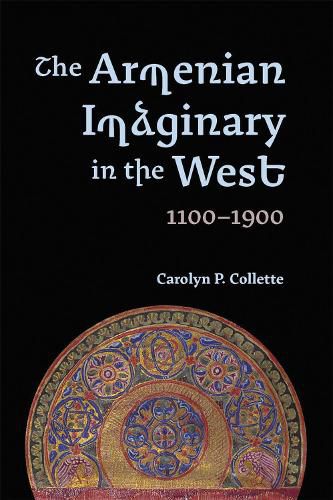Readings Newsletter
Become a Readings Member to make your shopping experience even easier.
Sign in or sign up for free!
You’re not far away from qualifying for FREE standard shipping within Australia
You’ve qualified for FREE standard shipping within Australia
The cart is loading…






Examines how Armenia has been represented and "imagined" in texts from two periods in its history: the Middle Ages and the nineteenth century.
Today most people who think of Armenia associate it with the genocide of 1915, the struggle Armenians waged after the First World War to reclaim their ancient lands in Anatolia, a struggle complicated by centuries of subordination to the Ottomans, by persistent Russian efforts to exert influence and claim territory, and by Western indecision manifested in plentiful words but few deeds. This book, however, tells a different story: one of geo-political importance, strength, struggle, and diminishment, narrated in texts largely created by and for Europeans and Americans. It asks how the West imagined, described, and presented Armenia over time in historical and fictional accounts during two periods of close Armenian-Western contact. The first period spans the twelfth to fourteenth centuries; it examines a variety of texts, including the travel narratives of Marco Polo and John Mandeville, William of Tyre's Deeds Done Beyond the Sea, and romances such as King of Tars, Bevis of Hampton and Le Roman de Melusine. The second period is rooted in events during the nineteenth-century American missionary movement. It engages with a variety of popular and widely disseminated texts - books, pamphlets, newspapers - written and published in the United States from 1830 to the mid-1890s, detailing the encounters between the missionaries and the Armenians, frequently in the voices of women.
$9.00 standard shipping within Australia
FREE standard shipping within Australia for orders over $100.00
Express & International shipping calculated at checkout
Examines how Armenia has been represented and "imagined" in texts from two periods in its history: the Middle Ages and the nineteenth century.
Today most people who think of Armenia associate it with the genocide of 1915, the struggle Armenians waged after the First World War to reclaim their ancient lands in Anatolia, a struggle complicated by centuries of subordination to the Ottomans, by persistent Russian efforts to exert influence and claim territory, and by Western indecision manifested in plentiful words but few deeds. This book, however, tells a different story: one of geo-political importance, strength, struggle, and diminishment, narrated in texts largely created by and for Europeans and Americans. It asks how the West imagined, described, and presented Armenia over time in historical and fictional accounts during two periods of close Armenian-Western contact. The first period spans the twelfth to fourteenth centuries; it examines a variety of texts, including the travel narratives of Marco Polo and John Mandeville, William of Tyre's Deeds Done Beyond the Sea, and romances such as King of Tars, Bevis of Hampton and Le Roman de Melusine. The second period is rooted in events during the nineteenth-century American missionary movement. It engages with a variety of popular and widely disseminated texts - books, pamphlets, newspapers - written and published in the United States from 1830 to the mid-1890s, detailing the encounters between the missionaries and the Armenians, frequently in the voices of women.